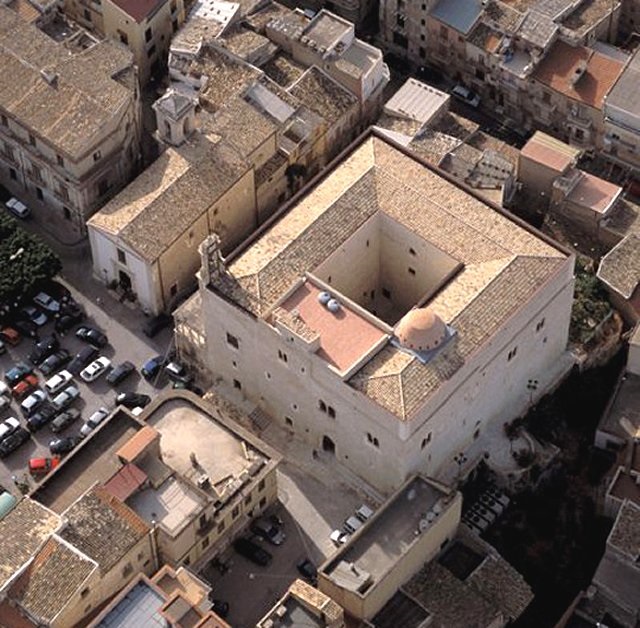FEVARA Castello Chiaramonte

FEVARA Castello Chiaramonte
Costruito nel XIII secolo dalla famiglia Chiaramonte, l'edificio ha la particolarità di presentare la transizione dal tipo castello normanno al quello del palazzo quadrato del re svevo Federico II (1194-1250).
Nel folklore locale, una misteriosa iscrizione nella hall parlano di un tesoro nascosto accessibile da un sottopassaggio dal castello verso la montagna Caltafaraci.
Infatti, nel cortile, stato rilevato un tunnel misterioso.
Construit au XIIIe siècle par la famille Chiaramonte, l’édifice à la particularité de présenter la transition entre le type du château Normand à celui de palais carré du roi souabe Frédéric II (1194-1250).
Dans le folklore local, une inscription mystérieuse dans le hall parlerait d’un trésor caché accessible par un passage sous le château allant en direction de la montagne Caltafaraci.
En effet dans la cour du château, un tunnel mystérieux à bien été décelé.
Built in the thirteenth century by the Chiaramonte family, the building has the particularity of presenting the transition from the Normand castle to the square palace of the Swabian King Frederick II (1194-1250).
In the local folklore, a mysterious inscription in the hall would speak of a hidden treasure accessible by a passage under the castle going towards the mountain Caltafaraci.
Indeed in the courtyard of the castle, a mysterious tunnel was well detected.
Nel folklore locale, una misteriosa iscrizione nella hall parlano di un tesoro nascosto accessibile da un sottopassaggio dal castello verso la montagna Caltafaraci.
Infatti, nel cortile, stato rilevato un tunnel misterioso.
Construit au XIIIe siècle par la famille Chiaramonte, l’édifice à la particularité de présenter la transition entre le type du château Normand à celui de palais carré du roi souabe Frédéric II (1194-1250).
Dans le folklore local, une inscription mystérieuse dans le hall parlerait d’un trésor caché accessible par un passage sous le château allant en direction de la montagne Caltafaraci.
En effet dans la cour du château, un tunnel mystérieux à bien été décelé.
Built in the thirteenth century by the Chiaramonte family, the building has the particularity of presenting the transition from the Normand castle to the square palace of the Swabian King Frederick II (1194-1250).
In the local folklore, a mysterious inscription in the hall would speak of a hidden treasure accessible by a passage under the castle going towards the mountain Caltafaraci.
Indeed in the courtyard of the castle, a mysterious tunnel was well detected.
